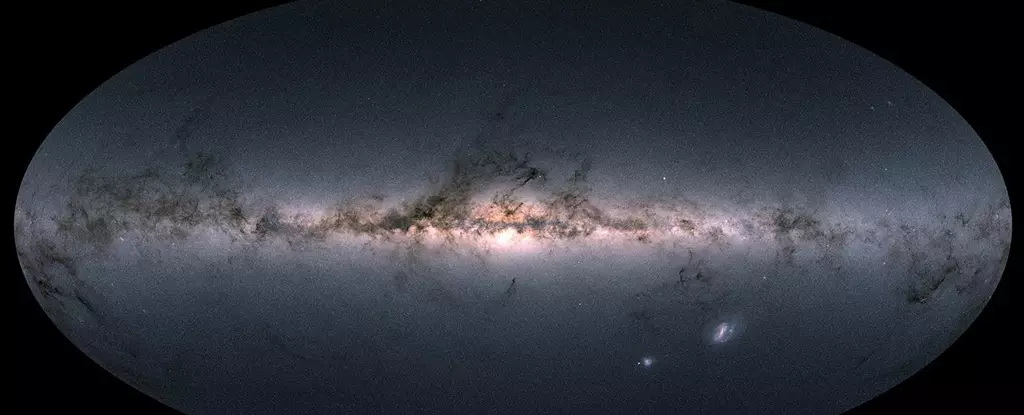

The Milky Way’s massive structure can be attributed to the various collisions and mergers it has undergone with other galaxies over time. Through these messy processes, other galaxies throughout the Universe have also experienced similar interactions. Currently, the Milky Way is seen to be absorbing its two satellite galaxies, the Large and Small Magellanic Clouds, a sign of their eventual merging with our galaxy. Recent research suggests that the last major merger involving the Milky Way occurred less than 3 billion years ago, contrary to the initial belief of it happening between 8 and 11 billion years ago. This new insight into the Milky Way’s collision history is derived from the data collected by the ESA’s Gaia mission.
The Gaia mission, launched in 2013, is instrumental in mapping over 1 billion astronomical objects, primarily stars, with great precision. By repeatedly measuring these objects’ positions and motions, Gaia can detect the imprints of past collisions with other galaxies, referred to as “wrinkles.” These wrinkles include phase space folds, caustics, chevrons, and shells that move through different groups of stars in the Milky Way, influencing their movements. Surprisingly, as the Milky Way ages, it becomes less wrinkly, a phenomenon opposite to the usual aging concept. Lead author Donlon stated that by studying how these wrinkles dissipate over time, researchers can pinpoint when the Milky Way experienced its most recent major merger.
Aside from wrinkles, the evidence of the Milky Way’s last major merger can be seen in an Fe/H-rich region where stars follow eccentric orbits. The Fe/H ratio in a star serves as a chemical fingerprint, revealing a common origin among stars with similar fingerprints and orbits, known as ‘the Splash.’ Stars in the Splash likely came from an Fe/H-rich progenitor and have orbits that differ significantly from their surroundings, indicating a past merger event. Two competing explanations – Gaia Sausage/Enceladus (GSE) dwarf galaxy collision and the Virgo Radial Merger (VRM) – have been proposed to explain the presence of these stars in the Milky Way’s inner halo. The VRM scenario, occurring less than 3 billion years ago, is favored based on recent Gaia data, indicating a more recent merger event.
Recent data from Gaia supports the idea of a more recent merger event, the Virgo Radial Merger, challenging previous beliefs about the Milky Way’s collision history. The increased prevalence of wrinkles in the data suggests that these stars joined the Milky Way less than 3 billion years ago, confirming the VRM scenario. While evidence of the ancient GSE merger still exists, distinguishing between stars from each merger event remains a challenge requiring advanced simulations. As Gaia continues to provide more data with each release, researchers hope to unravel the complexities of the Milky Way’s merger history and distinguish objects from the VRM and GSE events.
The ongoing research on the Milky Way’s collision history is reshaping astronomers’ understanding of the galaxy’s formation and evolution. New findings derived from Gaia data are constantly challenging and refining previous assumptions, painting a clearer picture of the Milky Way’s past. With each new discovery, astronomers gain insights into the complex events that have shaped our home galaxy and galaxies in general, furthering our comprehension of the universe’s intricate workings.
Foreign direct investment (FDI) in developing nations has long been heralded as a path to…
As spring beckons in April and May, stargazers have the unique opportunity to witness nature's…
Active matter, a term that refers to systems where individual components can consume energy to…
In a groundbreaking development, a research team led by Prof. Chen Changlun at the Hefei…
The inevitability of aging is experienced differently across individuals, influenced by a complex interplay of…
When we delve into the cataclysmic events that led to the destruction of Pompeii almost…
This website uses cookies.